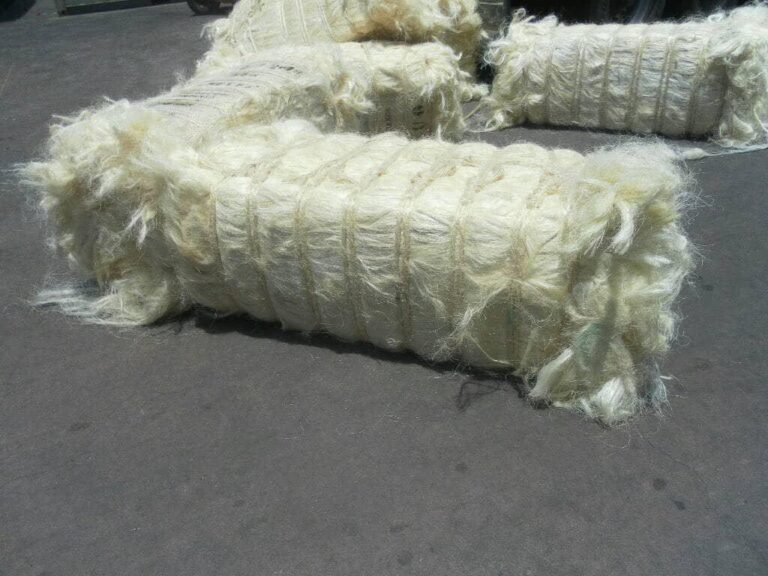Sisal Fiber
Sisal Fiber
Natural fibres are fibres that are produced by plants, animals, and geological processes. One of the most widely used natural fibers is Sisal fiber. It is also very easily cultivated. You can obtain Sisal fiber from Sisal plant. The plant, was formally known as Agave Sisalana. These plants produce rosettes of sword-shaped leaves which start out toothed, and gradually lose their teeth with maturity. Decortication is a process in which every leaf loses its long, straight fibers. During decortication, the leaves are beaten down to remove the pulp and plant material, leaving the tough fibers behind.
Sisal fiber is a high renewable source of energy , also it is fully biodegradable. Green composites are fabricated with soy protein resin which are modified with gelatin. Sisal fiber, modified soy protein resins, and composites are characterized for their mechanical and thermal properties. Sisal fibre is low maintenance with minimal wear and tear, and is exceptionally durable. It is not suitable for a smooth wall finish and also not recommended for wet areas, because it is too tough for textiles and fabrics.
Sisal fiber is derived from leaves of plant. It is usually obtained by machine decortications. The strands are usually creamy white, average from 80-120 cm in length and 0.2 – 0.4 mm in diameter and are lustrous in appearance. The World production is about 3000,000 tones, Brazil being the largest producer followed by China, Mexico, Tanzania, Kenya and Madagascar.
Sisal is a member of the agave family; Agavae Sisalana is the commercially grown species. The plants grow for 7 to 12 years and then produce a flower stalk 4 to 6 meters tall and die. Sisal is a xerophytic plant and thus it can grow in dry climates but it will not grow sufficiently in poorly drained soil. The life of sisal plant is usually 15-18 years. Sisal is generally harvested once a year but if the soil and the climate permits it can harvested three times in two years.
Physical properties of sisal fibers:
Length: 2.88 mm
Diameter: 100-300 mm
Width: 22.6 μm
Tenacity: 57.2 cN/Tex
Elongation: 3.02%
Moisture regain: 13%
Chemical Composition of Sisal Fiber:
The components of sisal fiber (% by weight):
- Cellulose 55-65
- Hemi-cellulose 10-15
- Pectin 2-4
- Lignin 10-20
- Water soluble materials 1-4
- Fat and wax 0.15-0.3
- Ash 0.7-1.5
Uses/Application of Sisal fiber:
From ancient times sisal has been the leading material for agricultural twine because of its strength, durability, ability to stretch, affinity for certain dyestuffs, and resistance to deterioration in saltwater.
- Sisal is used commonly in the shipping industry for mooring small craft, lashing, and handling cargo.
- It is also surprisingly used as the fiber core of the steel wire cables of elevators, being used for lubrication and flexibility purposes. Traditionally sisal was the leading material for agricultural twine or baler twine. Although this has now been overtaken by polypropylene.
- It is used in automobile industry with fiberglass in composite materials.
- Other products developed from sisal fiber include spa products, cat scratching posts, lumbar support belts, rugs, slippers, cloths and disc buffers.
- Sisal is used by itself in carpets or in blends with wool and acrylic for a softer hand.
- Sisal is also used for non-woven matting, brushing and roving.

